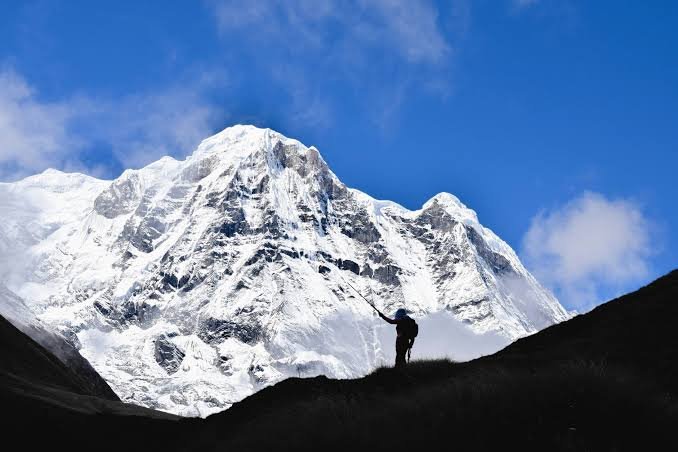ABC Trek Nepal: A Majestic Journey Through the Annapurna Sanctuary

Tucked away in the heart of the Himalayas, the ABC Trek Nepal, short for Annapurna Base Camp Trek, is an odyssey of soul-stirring grandeur and unmatched adventure. Revered by trekkers around the globe, this expedition invites nature lovers to walk through an ever-evolving tapestry of landscapes, from verdant subtropical forests to towering alpine meadows, culminating at the base of the awe-inspiring Annapurna Massif. For those craving an authentic Himalayan experience infused with cultural richness and physical exhilaration, ABC Trek Nepal is a quintessential pilgrimage.
A Route Laced with Diversity
The ABC Trek typically commences from Pokhara, Nepal’s serene lakeside city, which serves as the gateway to the Annapurna region. From here, the trail meanders through picturesque villages such as Ghandruk, Chhomrong, and Bamboo, each revealing the heartwarming hospitality of the Gurung and Magar ethnic communities. The terrain constantly shifts — one moment you’re under a dense canopy of rhododendron trees, the next you’re crossing swaying suspension bridges over crystalline rivers.
As the trail ascends, the scenery becomes increasingly dramatic. Glimpses of the Machapuchare (Fishtail Mountain), revered as sacred and hence unclimbed, and other snowy giants like Hiunchuli and Annapurna South ignite a profound sense of awe. At night, the lack of artificial light pollution renders the skies a canvas of dazzling constellations, adding a celestial charm to the trek.
Altitude and Achievement
Reaching Annapurna Base Camp at an elevation of 4,130 meters (13,550 feet) is both a physical accomplishment and a profoundly emotional experience. The amphitheater-like setting of the base camp, surrounded by a 360-degree panorama of snow-draped peaks, leaves even seasoned travelers speechless. The sheer proximity to the mighty Annapurna I (8,091 meters), the 10th highest mountain on Earth, creates an exhilarating sense of communion with nature’s raw magnificence.
Despite the challenging ascent and the unpredictable mountain weather, the ABC Trek is considered moderate in difficulty, making it accessible to trekkers of varied fitness levels. With a well-planned itinerary, acclimatization days, and reliable local guides, the journey becomes a sustainable and fulfilling endeavor.
Cultural Immersion Along the Way
The ABC Trek is more than a scenic escapade; it’s an opportunity to immerse oneself in Nepal’s time-honored mountain cultures. Traditional teahouses along the route offer not only
2 / 7
nourishment and shelter but also a glimpse into local customs, folklore, and cuisine. Dishes like dal bhat, yak cheese, and steaming cups of masala tea become staples for trekkers, often enjoyed by the fireside with fellow adventurers from around the globe.
Moreover, the deep spiritual resonance of the Himalayas is palpable throughout the trek. Prayer flags flutter in the wind, stone-carved mani walls line the paths, and small shrines remind visitors of the sacredness these mountains hold for the local people. The reverence for nature and the gods is woven into every aspect of daily life in these remote highlands.
A Testament to Sustainable Adventure
In recent years, ABC Trek Nepal has established itself as a model of eco-conscious tourism. With increased awareness of environmental impact, local authorities and trekking agencies have implemented guidelines to reduce waste, promote the use of biodegradable materials, and limit overtourism. Trekkers are encouraged to practice Leave No Trace principles and respect the delicate ecosystems and cultures they encounter.
The growing popularity of the trek has also brought economic vitality to the region, enabling locals to build better infrastructure, access healthcare, and improve education through tourism-generated income — a powerful example of sustainable development in action.
Annapurna Base Camp Trek Itinerary: A Journey Through the Heart of the Himalayas
The Annapurna Base Camp (ABC) Trek stands as one of Nepal’s most spectacular high-altitude adventures, inviting trekkers to weave through ethereal landscapes, traditional villages, and the sacred amphitheater of the Annapurna massif. An exquisite blend of natural grandeur and cultural richness, the ABC trek offers an immersive Himalayan experience. But behind the awe-inspiring panoramas and tranquil sunrises lies a thoughtfully paced itinerary—a blueprint that balances challenge with comfort, adventure with reflection.
Day 1: Arrival in Kathmandu – The Gateway to the Himalayas
Your journey begins in Kathmandu, Nepal’s bustling capital—a confluence of ancient architecture and urban vibrancy. After arrival at Tribhuvan International Airport, you are warmly welcomed by the towering Himalayan spirit that echoes throughout the city. Many trekkers spend this day acclimatizing, organizing permits (such as TIMS and ACAP), and taking in the vibrant chaos of Thamel.
Day 2: Drive or Fly to Pokhara – The Lakeside Oasis
An early drive (6–8 hours) or a short flight (25 minutes) to Pokhara sets the mood for the trek ahead. Nestled beside Phewa Lake with sweeping views of Machapuchare (Fishtail), this
3 / 7
picturesque city is a serene contrast to Kathmandu’s bustle. Spend the afternoon enjoying local cuisine, perhaps indulging in a hearty Dal Bhat meal—fuel for the days ahead.
Day 3: Drive to Nayapul & Trek to Tikhedhunga or Ulleri
From Pokhara, a brief scenic drive transports you to Nayapul, the trekking trailhead. The first leg winds through charming villages and terraced rice fields. You ascend gradually to Tikhedhunga, or for a more strenuous push, to Ulleri, a stone-laden Gurung village. The route introduces you to Nepal’s rural rhythms and the welcoming warmth of its people.
Day 4: Trek to Ghorepani – Stairway Through the Clouds
Prepare for one of the more demanding segments as you ascend a seemingly endless staircase to Ghorepani (2,850m). As you climb through rhododendron forests and cascading waterfalls, the temperature cools, and the air thins, marking your steady ascent into the highlands. Ghorepani is famed for its cozy teahouses and proximity to Poon Hill, a vantage point that rewards early risers with unforgettable sunrise views.
Day 5: Sunrise at Poon Hill, Trek to Tadapani
Before dawn, a torch-lit hike to Poon Hill (3,210m) rewards you with a magical sunrise over Dhaulagiri, Annapurna South, and Machapuchare—peaks ablaze in golden hues. After returning for breakfast, descend through moss-draped forests toward Tadapani, a village perched on a ridge, echoing with birdsong and enveloped in mist.
Day 6: Trek to Chhomrong – Gateway to the Sanctuary
From Tadapani, the trail meanders down and then ascends again to Chhomrong (2,170m), a pivotal stop and the last significant village before venturing deep into the Annapurna Sanctuary. The vistas are nothing short of mesmerizing, with Machapuchare’s serrated summit looming ever closer. Chhomrong’s tidy lodges and panoramic views provide a perfect midway haven.
Day 7: Trek to Dovan or Himalaya
Today’s trail is filled with contrast—descending to Chhomrong Khola and ascending through Bamboo and Sinuwa. The atmosphere becomes hushed, the trees more dense, the air more pure. As you trek deeper into the wilderness, settlements grow sparse. The night is typically spent in Dovan or the Himalaya, where the altitude begins to assert itself.
Day 8: Trek to Annapurna Base Camp via Machapuchare Base Camp
This is the trek’s crown jewel. You first arrive at Machapuchare Base Camp (MBC), standing beneath the sacred, unclimbed mountain. From here, the path gently ascends to the Annapurna
4 / 7
Base Camp (4,130m)—a glacial bowl surrounded by some of the highest peaks on Earth. The sight is surreal: the Annapurna Sanctuary unfolds like a cathedral of ice and stone, echoing with silence and splendor.
Day 9: Sunrise at ABC, Trek Back to Bamboo
At dawn, watch the first light strike Annapurna I (8,091m), the world’s 10th highest mountain. After absorbing the majesty, retrace your steps, descending past MBC and Dovan to Bamboo, a descent that’s physically easier but demands care on weary knees.
Day 10–11: Return Trek to Jhinu Danda and Drive Back to Pokhara
A final descent through Sinuwa and Chhomrong leads to Jhinu Danda, renowned for its natural hot springs—a sublime way to soothe sore muscles. From there, a short trek takes you back to Nayapul, where a vehicle awaits to drive you back to Pokhara, bringing the circuit full circle.
A Trek Etched in Memory
The Annapurna Base Camp Trek Itinerary is not merely a schedule—it is a pilgrimage across terrains both external and internal. It promises not just physical challenge, but spiritual renewal; not just panoramic views, but lasting impressions. Each stop along the way reveals a different facet of Nepal’s Himalayan soul, unfolding an experience that is unforgettable, humbling, and profoundly enriching.
The Cost of Annapurna Base Camp Trek: A Journey Through Value and Beauty
The Annapurna Base Camp (ABC) trek is a dream for countless adventurers and nature enthusiasts across the globe. Nestled deep within the majestic Himalayas of Nepal, this trek offers not only a soul-stirring experience but also an opportunity to walk amidst towering snow-capped peaks, quaint villages, terraced farmlands, and rhododendron forests. While its allure is undeniable, a critical question that often emerges in the minds of prospective trekkers is: What is the Annapurna Base Camp trek cost? This essay delves into the intricacies of the cost structure associated with this incredible journey, offering a comprehensive insight into what one can expect to spend and why it’s worth every penny.
Breakdown of Costs: A Layered Approach
The total cost of the Annapurna Base Camp trek can vary significantly based on several factors, including the season, travel style, trek duration, and whether one opts for a guided tour or an independent venture. However, the cost typically falls within the range of $500 to $1500 per person for a standard 7–12-day itinerary.
5 / 7
1. Permits and Documentation
Before setting foot on the trail, trekkers are required to obtain two key permits:
- · TIMS Card (Trekkers’ Information Management System): Around $20.
- · ACAP Permit (Annapurna Conservation Area Project): Approximately $30.
These fees contribute to the conservation of the region and are mandatory for all trekkers, whether guided or solo.
2. Transportation
Reaching the starting point of the trek, typically Pokhara or Nayapul, is the first logistical step. A round-trip flight from Kathmandu to Pokhara costs about $120–$150, while bus options are cheaper, ranging from $10–$25 each way. Jeep hires to trailheads may add another $30–$50, especially for remote access points like Jhinu Danda or Ghandruk.
3. Accommodation and Meals
Throughout the trail, accommodation is provided in traditional mountain lodges known as “teahouses.” A typical teahouse room costs $5–$10 per night, but the food is where expenses accumulate. Due to the remoteness, food prices increase with altitude:
- · Meals per day: $15–$25 on average.
- · Hot drinks, snacks, and bottled water: $1–$3 per item.
In total, food and accommodation can amount to $25–$40 per day, depending on your appetite and dietary preferences.
4. Guide and Porter Services
Hiring a guide not only enhances safety and navigation but also enriches the journey with cultural insights. A licensed guide charges about $25–$35 per day, while a porter (who carries your gear) costs around $20–$25 per day. Sharing a guide or porter among a group can help reduce the per-person cost.
5. Equipment and Gear
If you don’t own trekking gear, expect to rent or buy items in Kathmandu or Pokhara. Renting basics such as a down jacket, sleeping bag, and trekking poles can cost around $1–$3 per item per day. Complete outfitting may incur an additional cost of $50–$150, depending on the quality and duration of the service.
6 / 7
Cost vs. Value: Why It’s Worth It
The monetary cost of the Annapurna Base Camp trek is relatively low compared to similar alpine adventures in other parts of the world, such as the Alps or the Andes. Despite the affordability, the value is immense.
- · Unparalleled Scenery: From the looming presence of Annapurna I (8,091m) to the mystical Machapuchare (Fishtail Peak), the visual rewards are unmatched.
- · Cultural Immersion: The trail winds through vibrant Gurung and Magar villages, offering trekkers a chance to experience Himalayan hospitality, traditions, and folklore.
- · Physical and Mental Challenge: The high-altitude trek tests endurance and resolve, leaving a lasting sense of accomplishment.
- · Eco-Tourism Impact: The money spent supports local communities and conservation initiatives, promoting sustainable tourism.
Tips to Manage and Minimize Costs
- · Travel Off-Peak: Trekking in shoulder seasons (March–April, October–November) ensures better rates and fewer crowds.
- · Go in a Group: Sharing guides, porters, and accommodations can significantly reduce per-person expenses.
- · Eat Local: Sticking to traditional Nepali fare, such as dal bhat, can help keep food costs low.
- · Carry Reusables: A refillable water bottle with purification tablets or a UV filter eliminates the need for buying bottled water.
Conclusion
In conclusion, the Annapurna Base Camp trek cost is a mosaic of manageable expenses that together unlock a once-in-a-lifetime experience. While budgeting wisely is crucial, the investment goes beyond dollars—it’s a contribution to local livelihoods, conservation efforts, and above all, personal transformation. Whether you’re a budget backpacker or a mid-range traveler, the ABC trek is an affordable gateway to some of Earth’s most breathtaking wonders.
· Panoramic Views of Everest, Lhotse, Nuptse, Ama Dablam
· Sherpa Culture & Buddhist Monasteries ( Tengboche and upper Pangboche )
· Kala Patthar Sunrise for the best Everest views
· Teahouse Trekking—local food, warm beds, and community





